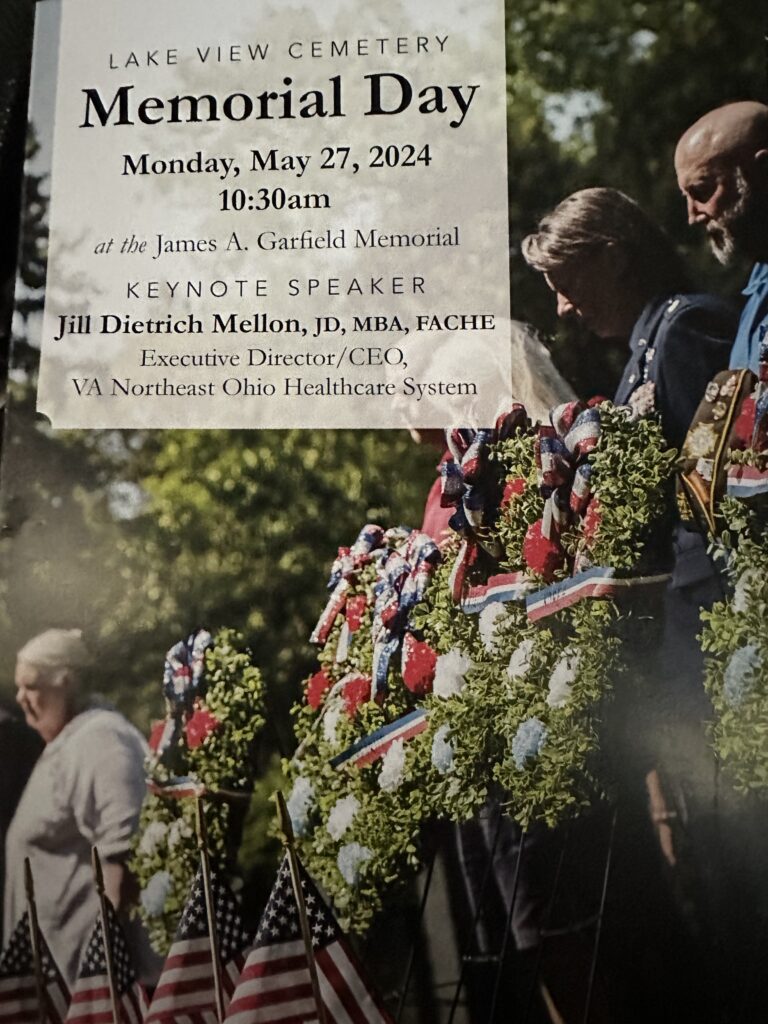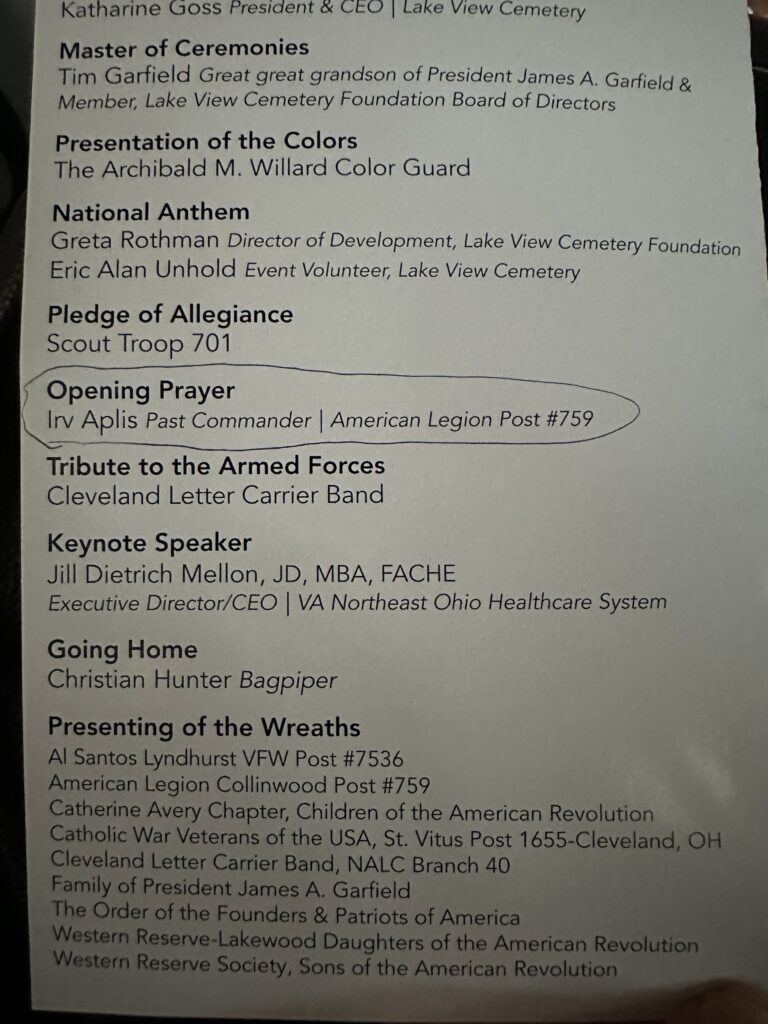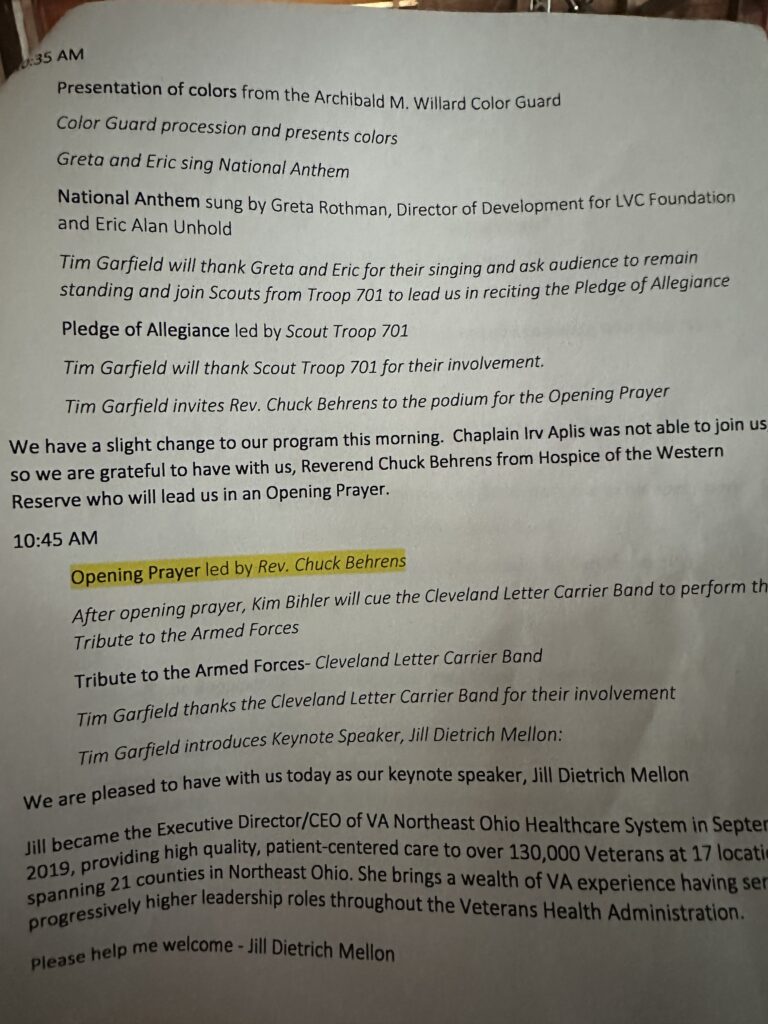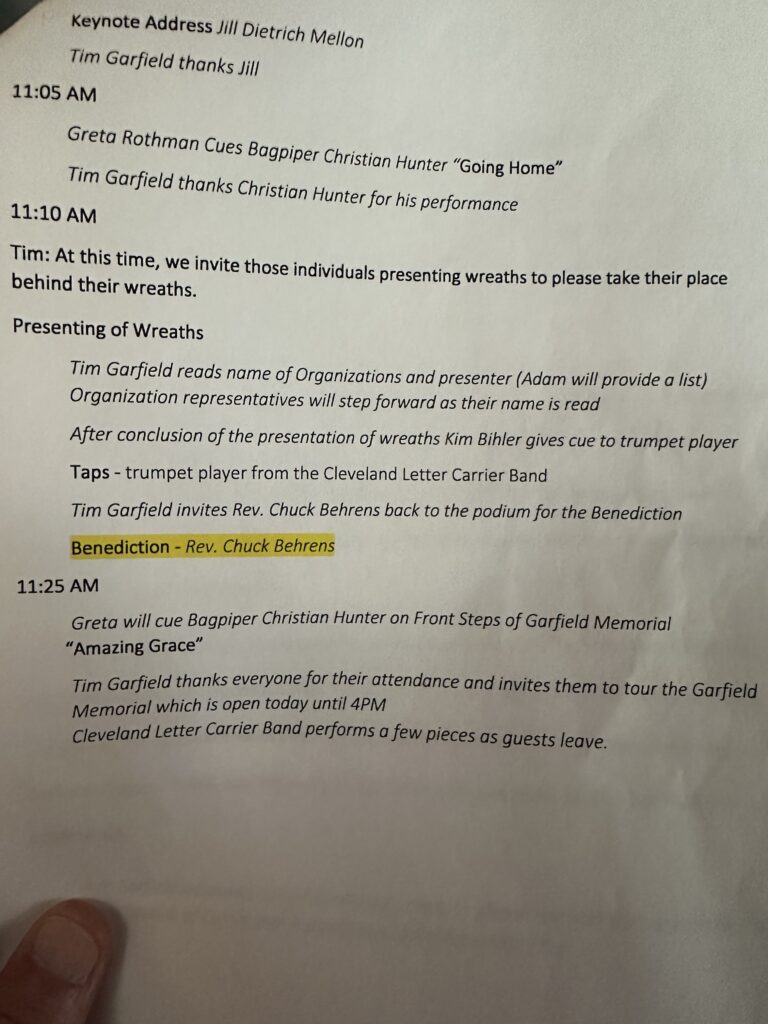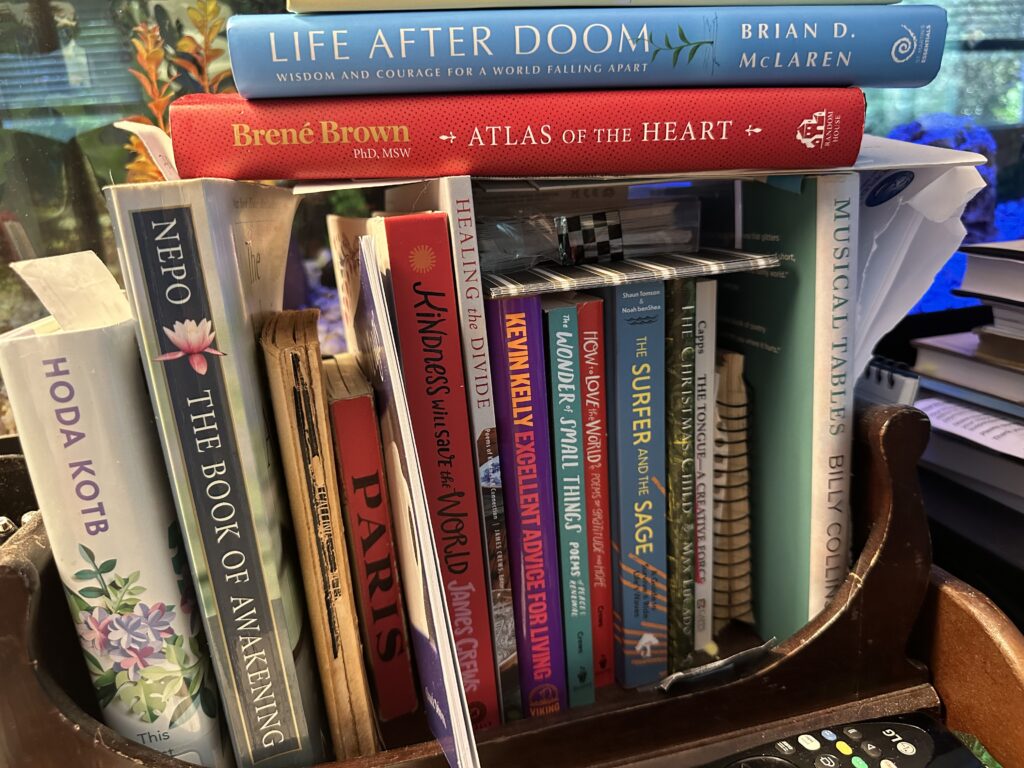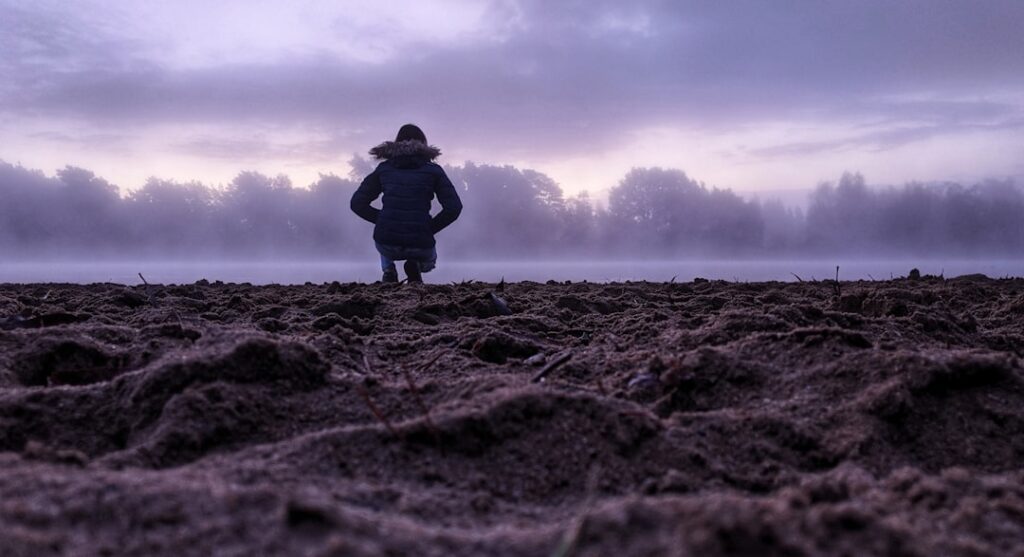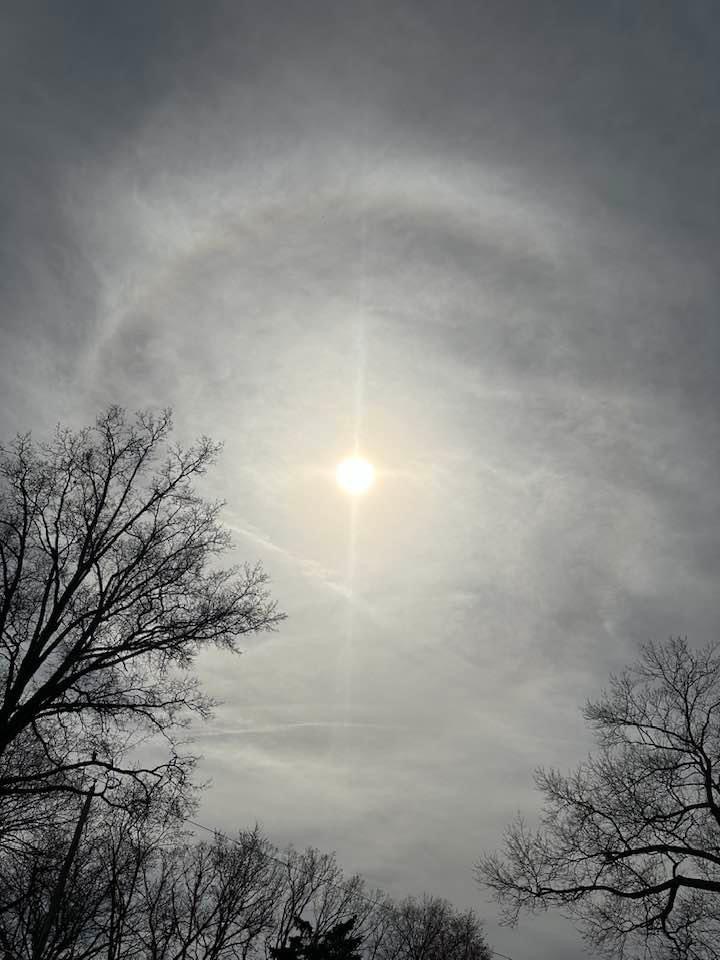It’s not all that unusual to get a call on a Sunday afternoon asking whether or not I can do a service, even if it’s the day before Memorial Day. That is exactly what happened this past Sunday and they were asking if I could do the Invocation and the Benediction for the Memorial Day services held annually at the historic Lake View Cemetery in Cleveland, OhioI’ll be honest with you, my first knee-jerk reaction was this is may not be a good idea, not because it’s too late notice but because Erin, my wife was recovering from a killer kidney stones removal procedure just the day before; but this is where that strange duck of me that waddles and quacks a little bit differently sort of enters.
Maybe it’s an excuse, but I rationalize and say it’s a reason, in fact, one of the biggest reasons why I’m here and if somebody asks me to do something and I’m available to do it, I feel like it’s a divine intervention of sorts; that I have an obligation to fulfill the request. Yes, egotistical as it sounds and maybe even more glaringly appears. I feel like it’s a divine intervention for me not to do it, for me to accept (or else I would have never been asked in the first place).
I gladly accepted the invitation to fill in for somebody who took sick and couldn’t do the Invocation and the Benediction. His name is already printed in the bulletin
It didn’t matter to me if I stood up in front of others and they thought I might be Irv Aplis. Besides, the Master of Ceremonies, Tim Garfield, a direct descendant of President Garfield, took care of that:
I didn’t repeat my name as Chuck Behrens, a Spiritual Care Coordinator with Hospice of the Western Reserve. I stood before a crowd honoring the memory of many and the honor of all and gave what I thought to be an Invocation and Benediction worthy of a Memorial Day observation; to be sure, it wouldn’t have been the one that Irv Aplis, Veteran and Past Commander of The American Legion Post #759 would have given but it’s the one that I was invited to give.Yes, like so many other occasions I wasn’t there to save the day. I was humble enough to be recognizing that I was there to be saved by the day and it was magical. With the band playing, bagpiper piping, and the address that was worthy of a Memorial Day given and received, I and all the many people on a rainy day were there to remember and more importantly, to prove we haven’t forgotten, the memories of the many and the honor for all.
Yeah, you may be right. It’s a rationalization but the next time I get a text or call, this will be another reason not an excuse. Another reason why I’ll probably say, “Absolutely, I’m available and I’d be glad to help. Tell me how.”
I know. I KNOW, I’m a strange duck, or at least one that waddles and quacks differently.
Now here’s the question and it may be a little more difficult to answer than it seems:
HOW DO YOU ANSWER THAT CALL?
HOW DO YOU RESPOND TO THAT TEXT?
Something nudges me deep from your Within’s to my WITHIN’S:
THE SAME WAY. . .And if you’re still reading this, you are a Caring Catalyst to do so
THE NEXT TIME~~
Pssssssssssssssssssssst:
AND THERE’S ALWAYS A NEXT TIME~~GO AHEAD,
Be an Irv Aplis
the next time he may not be able but
YOU ARE
JUST A MOMENT: STUMPED
It’s what we do the most, isn’t it:
JUST TO TAKE THINGS FOR FACE VALUE
without taking the time to
TAKE A LOOK. . .
Let’s face it, there’s so much more below our surface, under our skin than folks or even ourselves ever can see let alone look at. . BUT:
JUST A MOMENT: the next time you feel cut off at the knees or when you literally feel chopped up what’s left behind is so much NOT what REMAINS
 Be a help-self Caring Catalyst enough to
Be a help-self Caring Catalyst enough to
dig a little deeper; not far below the surface at the root of things there’s still much that’s alive, that’s taking in nourishment and may not sprout in the ways that it once did (which may be the good news) but now ready to continue to grow that the surface won’t reveal but the at the root of it,
STILL VERY MUCH IS ALIVE
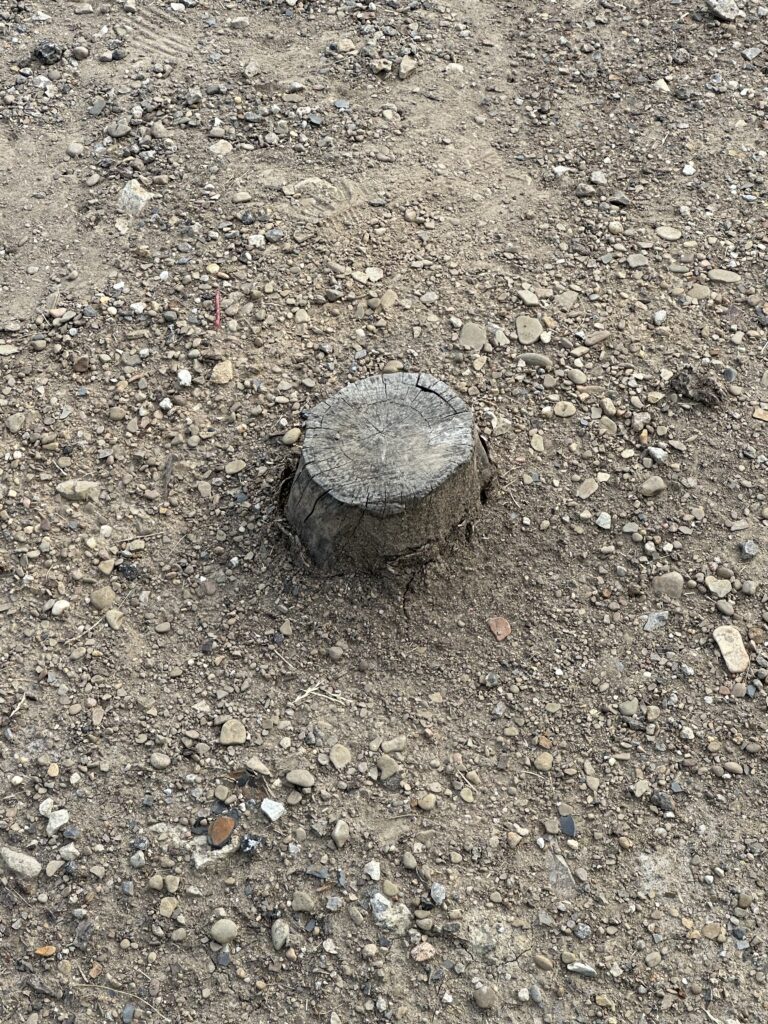
The next time you feel
S T U M P E D
you’re far from it
D I G
just a little deeper
a little longer
a little more lovingly
YOU ARE MORE
(so very much more)
MAPPING OUT A LIFE IN WORDS
READING A MAP
Maybe it’s a long forgotten art now that we have GPS systems and WAZE and GOOGLE MAPS but at times we don’t know our up from a down or a left from a right because. . .we’ve lost our direction. . .
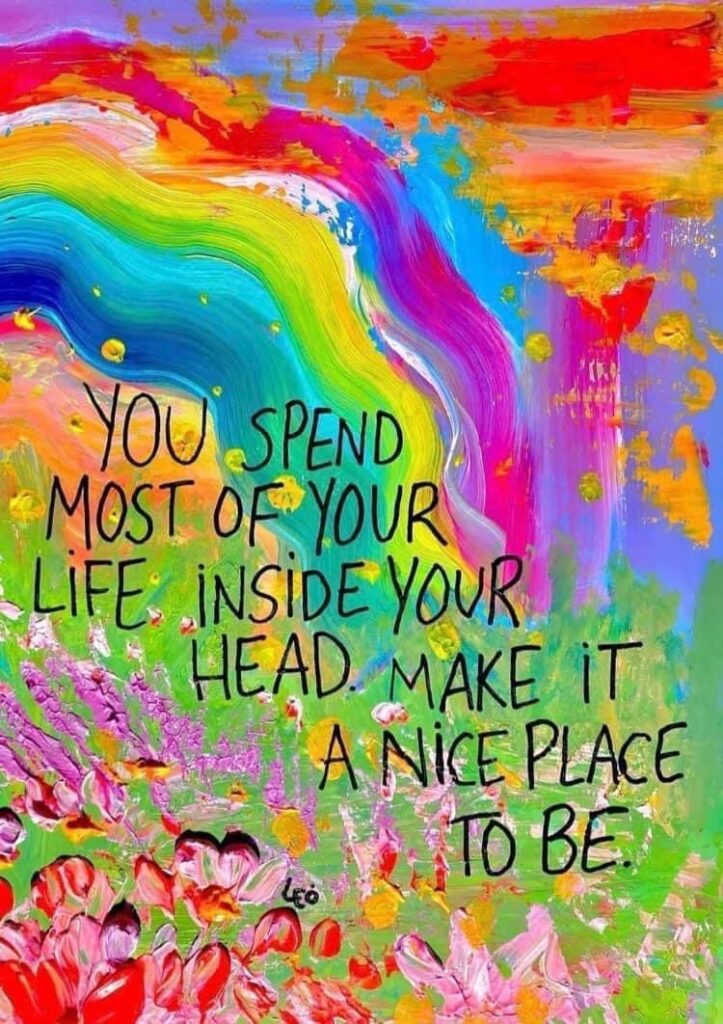 WHAT DOES IT ALL MEAN
WHAT DOES IT ALL MEAN
. . .this sense of DIRECTLESSNESS
so when I recently read a post from Neale Donald Walsch, his words rang my chimes in a way that I needed D I R E C T E D
“you cannot help another who will not
help him- or herself.
In the end, all souls must walk their path — and the
reason they are walking a particular path may not be
clear to us…or even to them at the level of ordinary
human consciousness.
Do what you can to help others, of course. Show
love and caring whenever and wherever you can.
But do not get caught up in someone else’s “story”
to the point where you start writing it.
Know what I mean?”
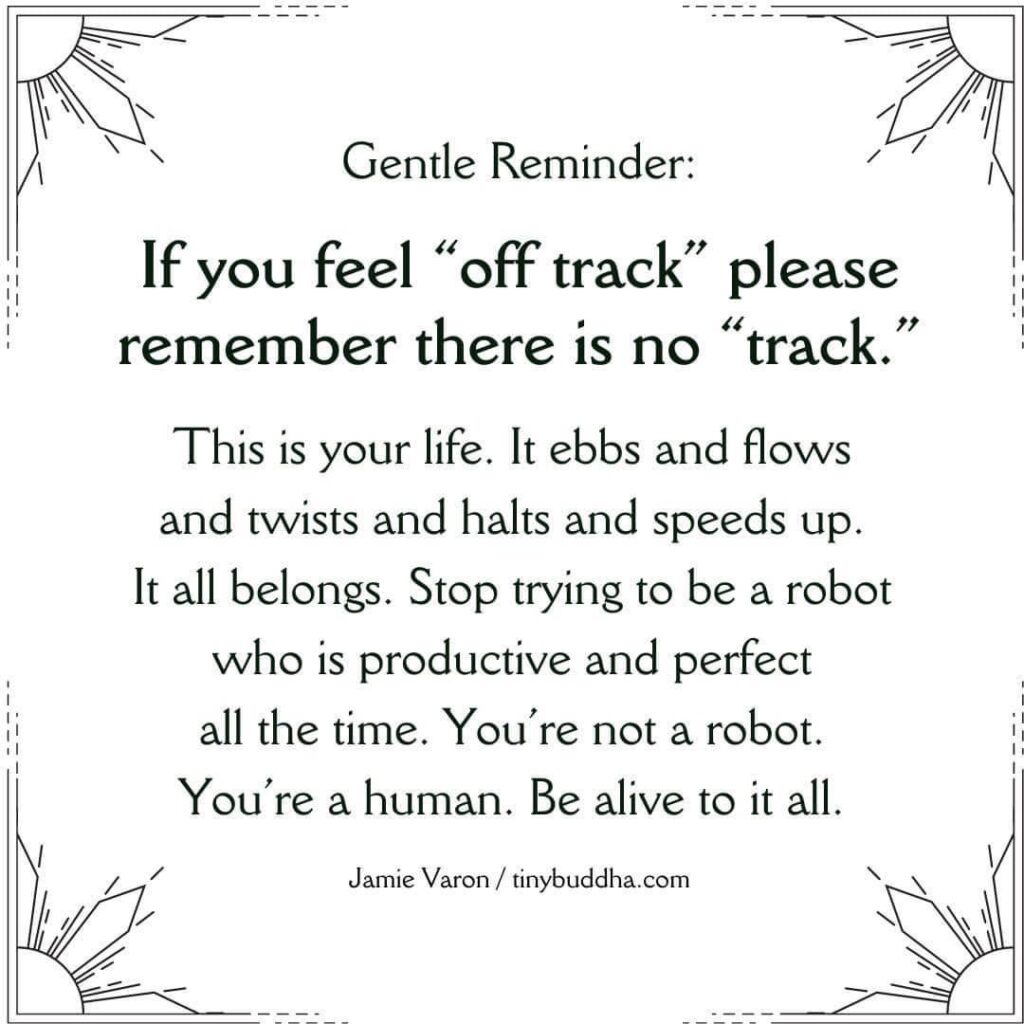 and as usual
and as usual
Master RUMI
doesn’t disappoint:
PRAYER FOR CHANGE
I prayed for change,
I prayed for guidance
and learned to trust myself.
I prayed for happiness
and realized I am not my ego.
I prayed for peace
and learned to accept others unconditionally.
I prayed for abundance
and realized my doubt kept it out.
I prayed for wealth
and realized it is my health.
I prayed for a miracle
and realized I am the miracle.
I prayed for a soul mate
and realized I am the One.
I prayed for love
and realized it is always knocking,
but I have to allow it in.
~ Rumi♡
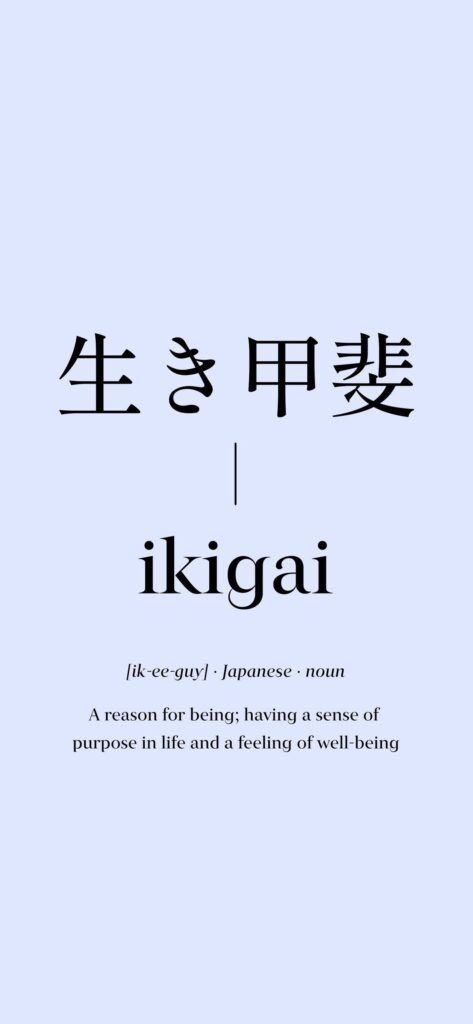 Psssssssssssssssssssssssst:
Psssssssssssssssssssssssst:
The Pen in your hand
is for writing your story
and not Another’s
but at best
there’s a glorious collaboration
that forever sees our stories
telling each other’s
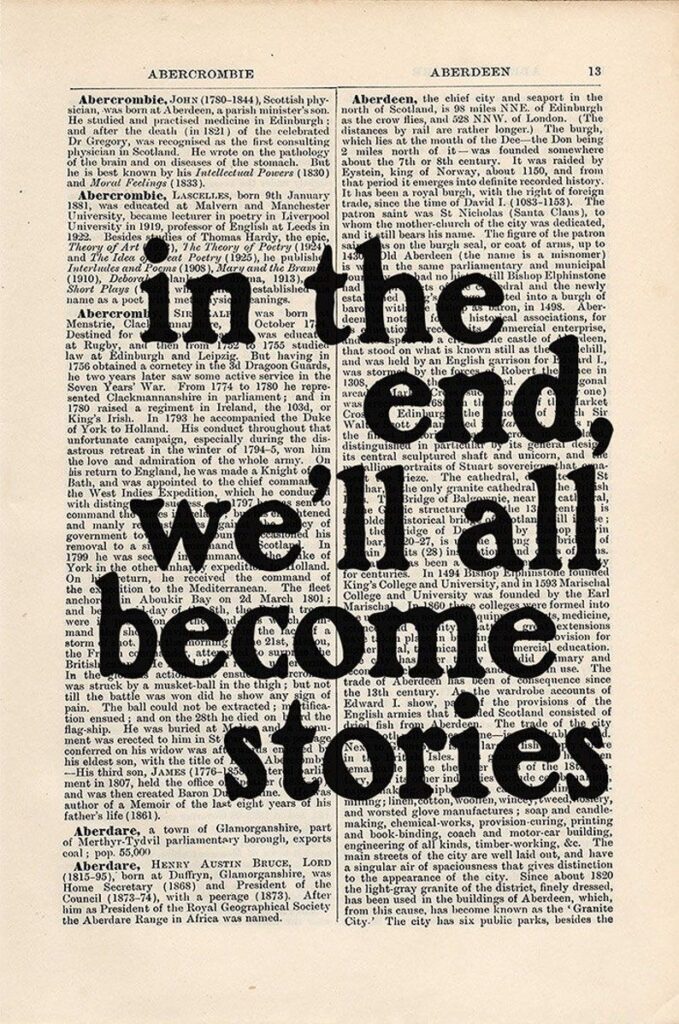 We travel on
We travel on
in each other’s words
as they tell the stories
we are ever writing. . .
JUST A MOMENT: I F (I maginary F riends)
We took our seven-year-old granddaughter, Evey to see the movie that John Krasinski and Ryan Reynolds were in called IF (Imaginary Friends)
A great movie that just doesn’t pull back the curtain on what I don’t want you to see, it rips it from their rod so that I could really see, feel, experience what I’ve never really lost or even forgotten so much as embarrassingly remember, and now kind of horrifyingly admit: I’VE GOT THEM; Yes. . . I’ve got THEM; not so much imaginary friends, IF’S, but things that bring me exceedingly comfort, peace, happiness, contentment and unconditional love
Oh, that’s right and the real fun began afterwards when we went back to their house and grandma helped plant flowers while Evey assisted and every time she took up a worm or yes, even a grub, she talk to it, named them, treated it is if they were her new best friends. Before playing in a bucket of mud (of which I don’t think her mom especially liked)
reveling in joy and hopefully never forgetting what I have most often:
YOU ARE ALWAYS A KID!
E N J O Y
HAVE FUN
DON’T EVER STOP
Now. . .about that Emotional Support Pile of Books. . .
FIDDLE FARTING AROUND
FIDDLE FARTING
Don’t fiddle fart around
they all said
grandparents, parents, teachers, friends
because it’ll all lead to NOTHING
they all said
Now your words won’t come out
and your thoughts won’t go away
as you lay in a hospice bed
where other Fiddle Farters have died
Your memories rattle much louder
than your wheezing-can’t-take-in-any-more-air-lungs
knowing that fiddle farting around
was much more than a NOTHING
and a flavorable dash more of SOMETHING
that’ll have you dying wishing
for a lot more of EVERYTHING
 Thanks again, Kurt for an awesome fiddle farting afternoon and now, a lifetime of ongoing lessons, especially seeing the miraculous in the mundane. . .
Thanks again, Kurt for an awesome fiddle farting afternoon and now, a lifetime of ongoing lessons, especially seeing the miraculous in the mundane. . .
A PIECE OF AMERICANA PIE
I love pie, especially pecan, but I’m a sucker for a good piece of AMERICANA PIE no matter whenever or however it’s served up. Nobody serves us a better slice than the late, great Paul Harvey. Here. Enjoy a slab of AMERICANA PIE:
PAUL HARVEY’S LETTER TO HIS GRANDCHILDREN:
We tried so hard to make things better for our kids that we made them worse. For my grandchildren, I’d like better.
I’d really like for them to know about hand me down clothes and homemade ice cream and leftover meat loaf sandwiches.. I really would.
I hope you learn humility by being humiliated, and that you learn honesty by being cheated.
I hope you learn to make your own bed and mow the lawn and wash the car.
And I really hope nobody gives you a brand new car when you are sixteen.
It will be good if at least one time you can see puppies born and your old dog put to sleep.
I hope you get a black eye fighting for something you believe in.
I hope you have to share a bedroom with your younger brother/sister. And it’s all right if you have to draw a line down the middle of the room, but when he wants to crawl under the covers with you because he’s scared, I hope you let him.
When you want to see a movie and your little brother/sister wants to tag along, I hope you’ll let him/her.
I hope you have to walk uphill to school with your friends and that you live in a town where you can do it safely.
On rainy days when you have to catch a ride, I hope you don’t ask your driver to drop you two blocks away so you won’t be seen riding with someone as uncool as your Mom.
If you want a slingshot, I hope your Dad teaches you how to make one instead of buying one.
I hope you learn to dig in the dirt and read books.
When you learn to use computers, I hope you also learn to add and subtract in your head.
I hope you get teased by your friends when you have your first crush on a boy / girl, and when you talk back to your mother that you learn what ivory soap tastes like.
May you skin your knee climbing a mountain, burn your hand on a stove and stick your tongue on a frozen flagpole.
I don’t care if you try a beer once, but I hope you don’t like it… And if a friend offers you dope or a joint, I hope you realize he/she is not your friend.
I sure hope you make time to sit on a porch with your Grandma/Grandpa and go fishing with your Uncle.
May you feel sorrow at a funeral and joy during the holidays.
I hope your mother punishes you when you throw a baseball through your neighbor’s window and that she hugs you and kisses you at Christmas time when you give her a plaster mold of your hand.
These things I wish for you – tough times and disappointment, hard work and happiness. To me, it’s the only way to appreciate life.
 IT IS ALL GOOD
IT IS ALL GOOD
ALL OF IT
Hint: THAT’S THE SECRET INGREDIENT IN A SLICE OF AMERICANA PIE
(the Good and the Bad and everything in between)
Enjoy every crumb and don’t be afraid to ask for seconds; there’s always plenty for all. . .
Y U M M Y
JUST A MOMENT: UNLEARNING TO LEARN
What are some of the lessons that you learned, were taught, or even punished for not learning fast enough when you were a kid?
Have you ever had to unlearn a lesson to learn it in a new way that would benefit your life?
It’s not that we were taught things to harm us. We were always taught lessons to protect us from the world and yes, sometimes from ourselves.
Come on we, don’t wait for the rain so that we could go outside and play or barbecue or lay out. We don’t dance in mud puddles in our bare feet or worse, our brand new shoes. We know better because we were taught better and maybe, maybe we need to know a little bit more. Go ahead, take a walk in the rain, stomp in a mud puddle, even with people watching. Who knows, who knows, the exhilaration that kids have could just be what’s worth feeling for us, too.
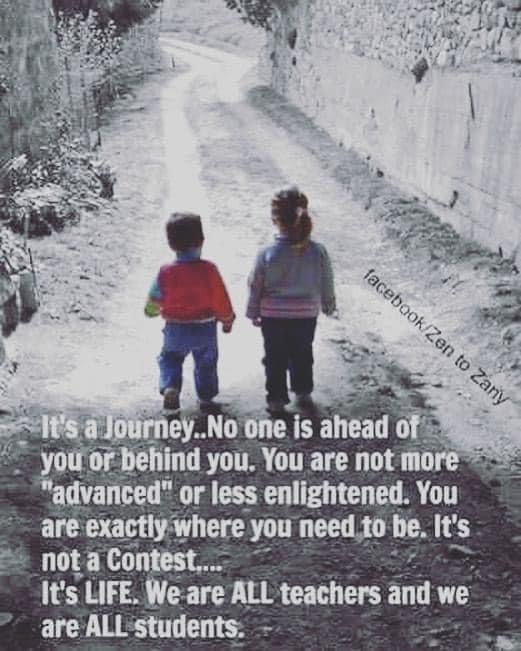 S P L A S H
S P L A S H
O N
FROM THE SOUL TO THE THROAT TO THE PAGE
Photo by Hannah Wright on Unsplash
My emptinesshas a fullnessthat is hard to carryIt’s a thick sludge in my veinsthat refuses to pumpthrough my soul’s heartwhile it oxygenates the darkestConsider these words from Richard Rohr, excerpted from his meditation on “The Sacred in the Concrete”:
Robert Frost said, “A poem begins with a lump in the throat; a home-sickness or a love-sickness.”¹ If a poem doesn’t give us a lump in the throat, is it really great poetry? My final theological conclusion is that there’s only one world and that it’s all sacred. However, we have to be prepared to know what we’re saying when we say that. If we say too glibly that the trees are sacred, along with our dog, a friend, and the roses, then we don’t really believe it. We first need to experience “a lump in the throat” to have encountered the sacred. The sacred is something that inspires awe and wonder, something that makes us cry, something that gives us the lump in the throat. We must first encounter the sacred in the concrete and kneel before it there, because we can’t start with the universal.
Poets . . . make the connection between the concrete and the universal. When we make that connection, there’s suddenly a great leap of meaning, an understanding that it’s one world. The very word “metaphor,” which comes from two Greek words, means to “carry across.” A good metaphor carries us across, and we don’t even know how it’s occurred.
. . . If we’re reading a poem too quickly, between two urgent meetings or other hurried spaces, we probably won’t get it, because we don’t have time to release ourselves. We need quiet, solitude, and open space to read poetry at greater depth. Then and only then do poems work their magic.
(My thanks to Fr. Richard Rohr, via the Center for Action and Contemplation
It’s not that the Sun doesn’t gloriously melt through the clouds so much as we just don’t take time to NOTICE; which kind of means that the worst poem of all isn’t the one not yet written, just the one not recognized or read. . .p o n d e r e d
JUST A MOMENT: BEING IN PLACE
It’s one of the universal first lessons we’ve ever learned, and we learned it at a small age: IF YOU USE IT, PUT IT BACK! We all know there were consequences for not putting things back where we found them; maybe the lesson is there for us to learn again, especially when we feel like we literally have lost our place, where there’s no one that can find us, or maybe we’re hiding in such a spot where we don’t want to be found?
And then there’s the new mandate today of STAY IN YOUR LANE, which is a nice way to say, KNOW YOUR PLACE! But it’s true, if we just stayed in our places 100% of the time and we’re good little soldiers, new worlds as well as new adventures would never be had because sometimes the greatest thing we can ever do is being in the wrong place at the right time for somebody else.
Hey, JUST A MOMENT–notice where you’re at, where you want to be and who you’re there for in the place that you are right now. And when you’re not being utilized, put yourself safely away so that you could be available for the very next time!
FIND YOUR WAY TO BE WHERE YOU’RE NEEDED
WHEN YOU’RE NEEDED. . .
(even when it feels OUT OF PLACE)
THE VILLAGE
This video guts me. It filets me in a way that makes me more aware of what I should be aware of and maybe what I shouldn’t be aware of as much.
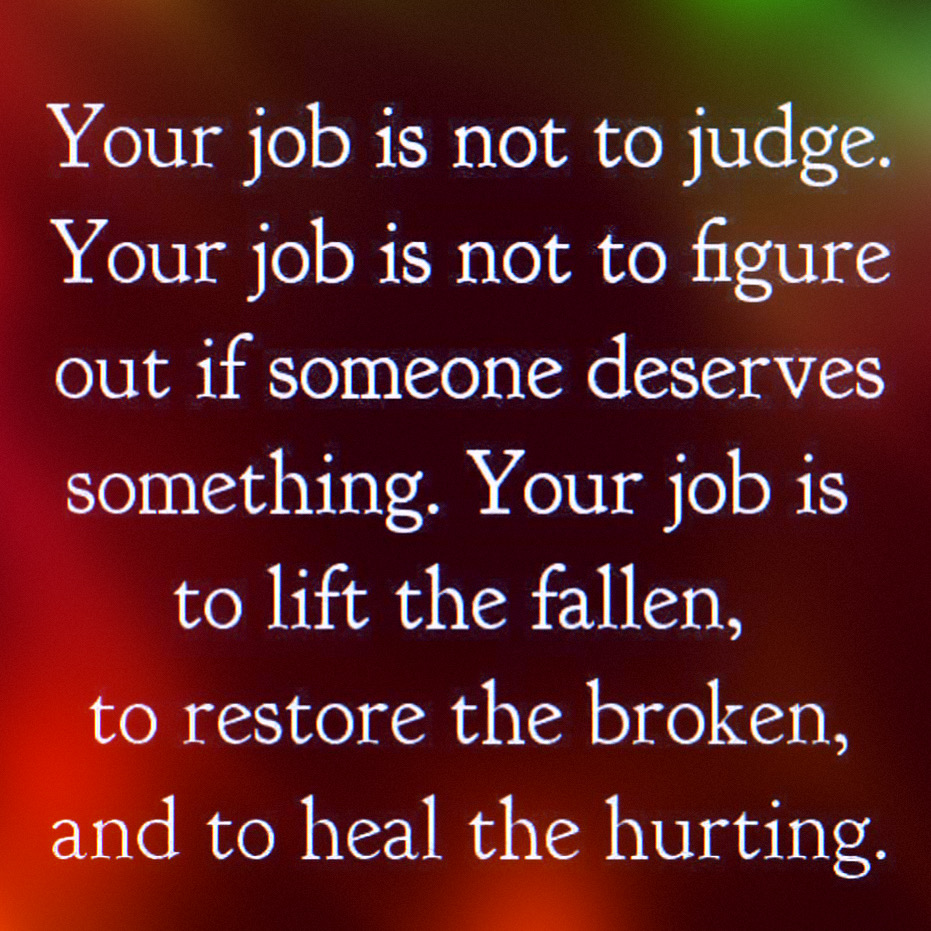 QUESTIONS, CLASS?
QUESTIONS, CLASS? Uhhhhh. . .if it takes a Village
Uhhhhh. . .if it takes a Village. . .maybe it really takes a
BETTER ONE!

- « Previous Page
- 1
- …
- 19
- 20
- 21
- 22
- 23
- …
- 91
- Next Page »
